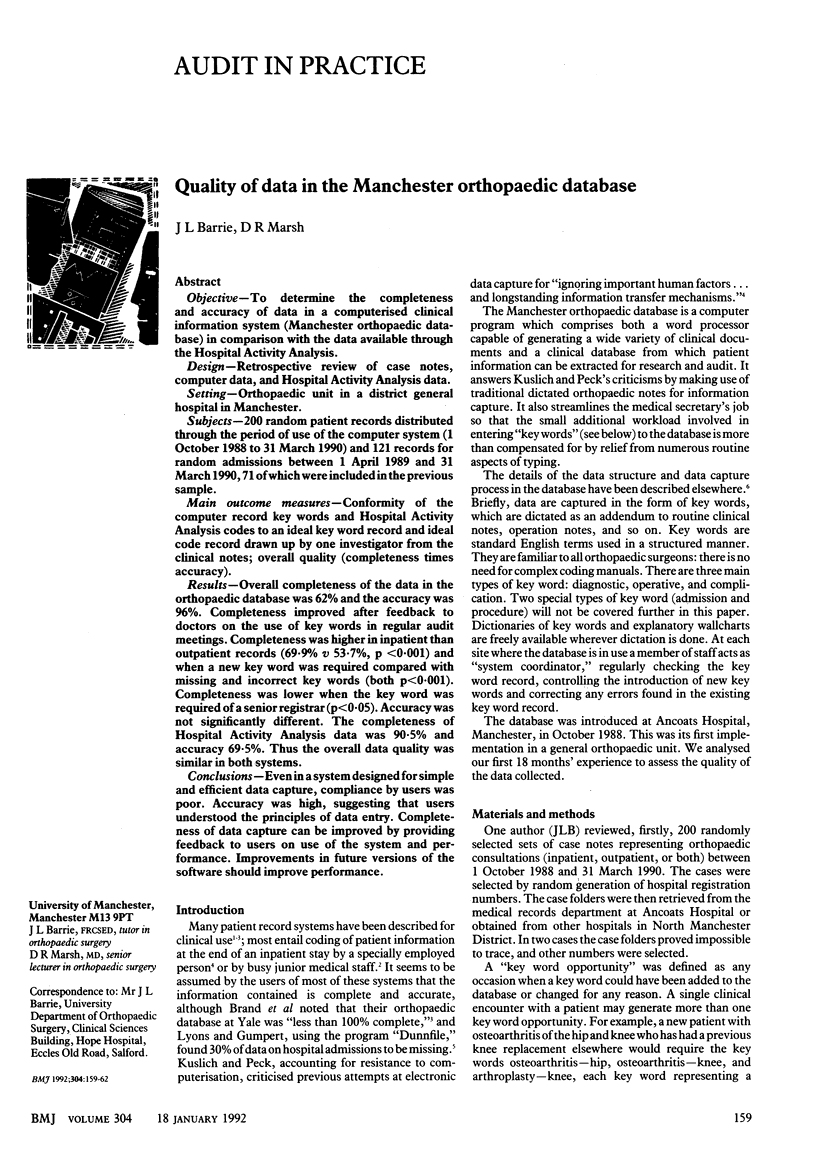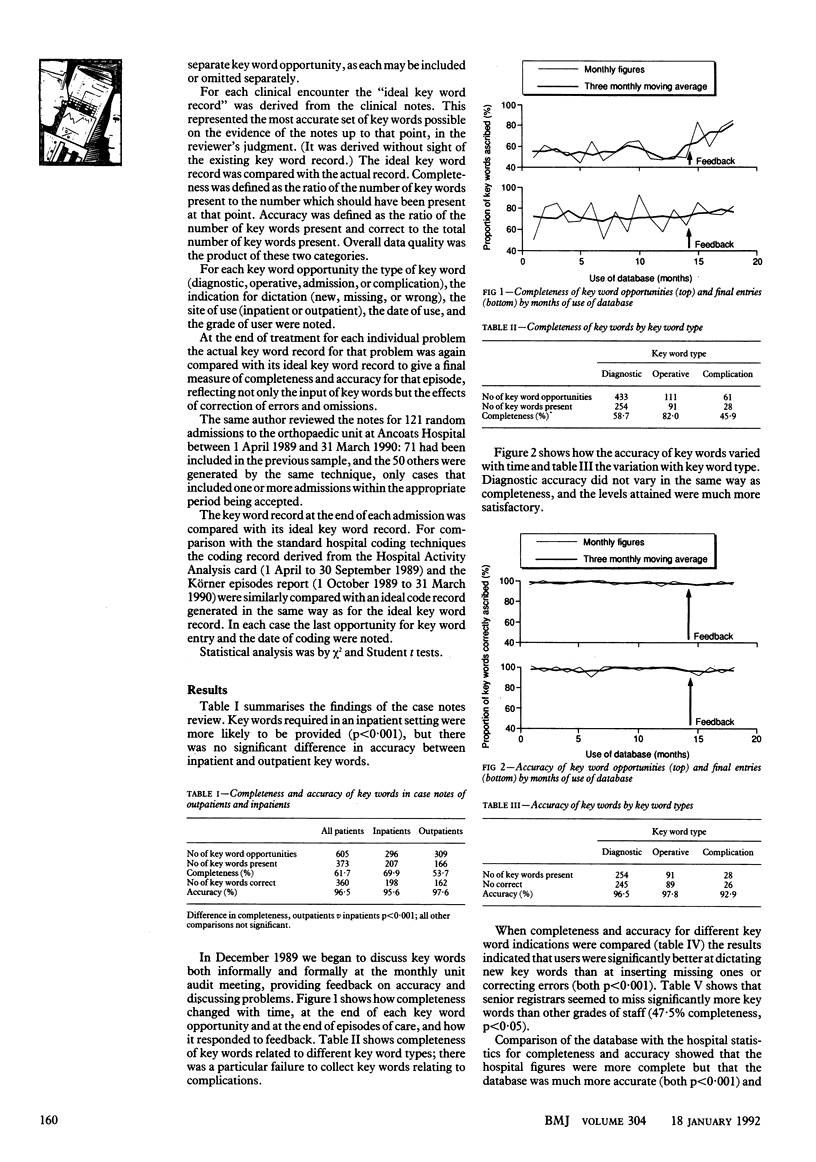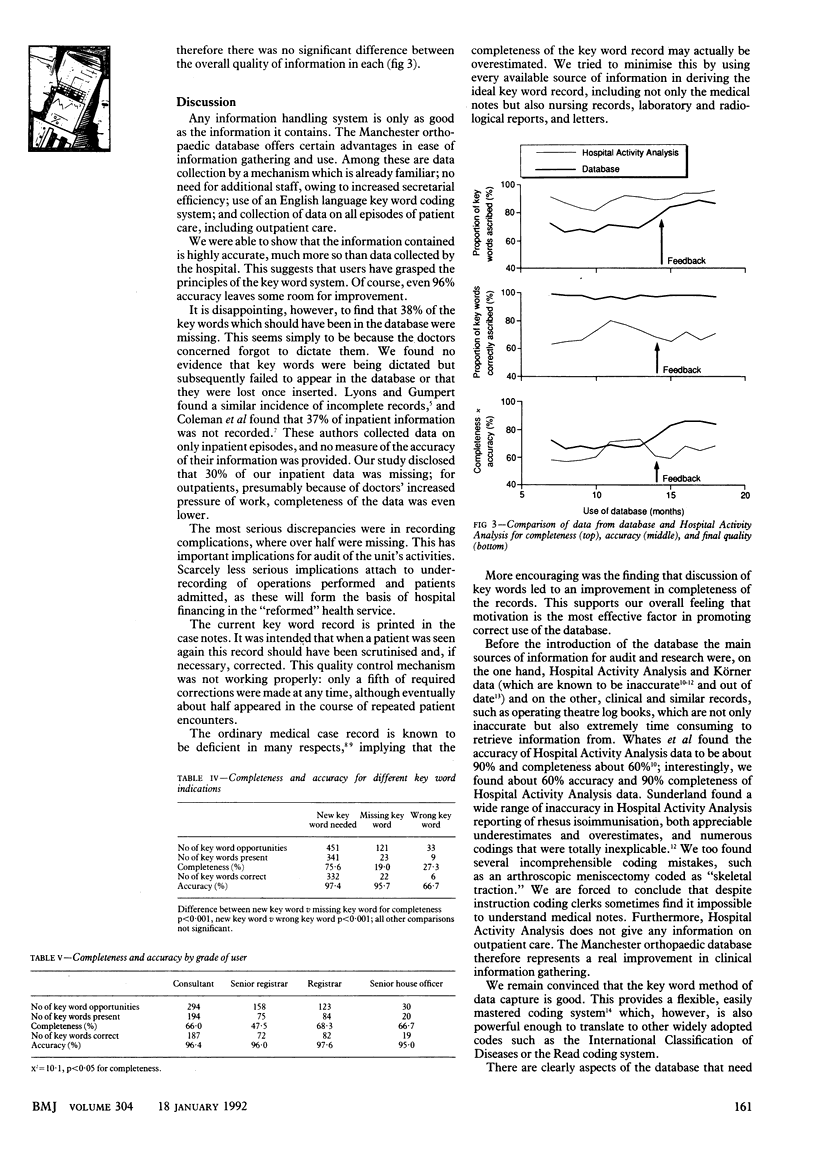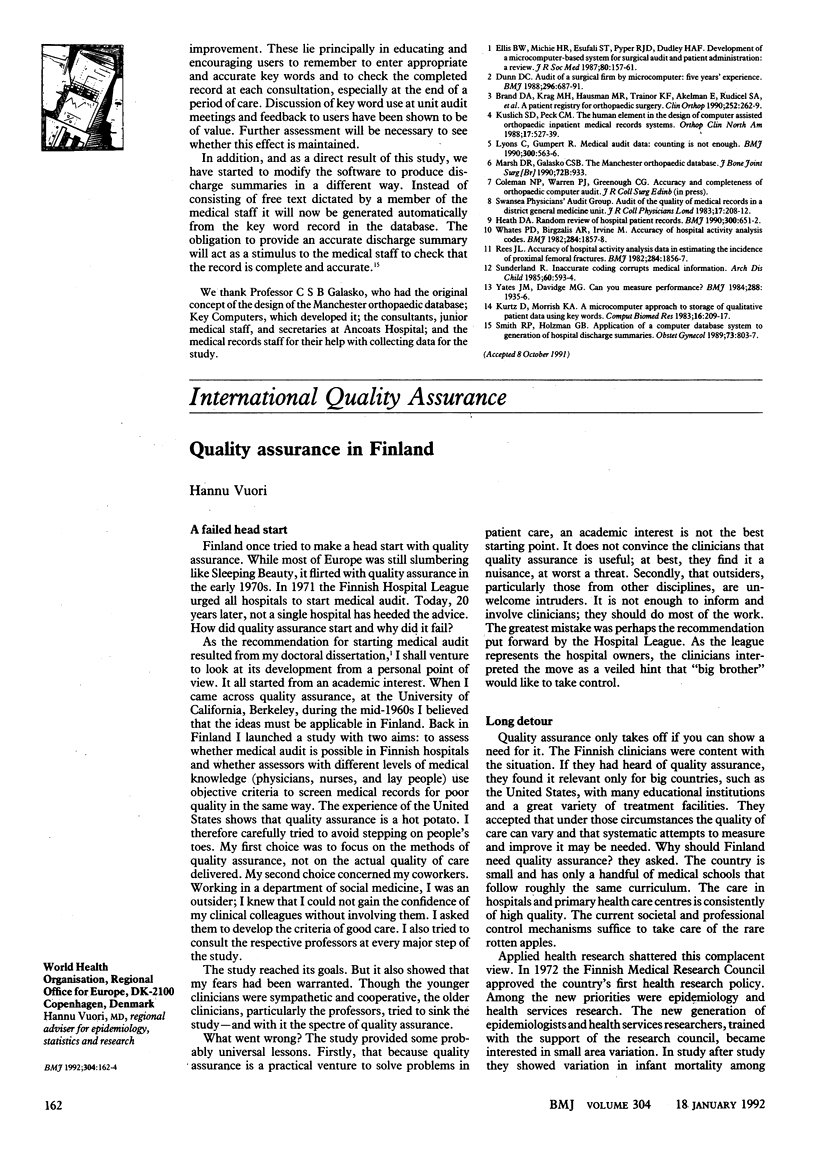Abstract
OBJECTIVE--To determine the completeness and accuracy of data in a computerised clinical information system (Manchester orthopaedic database) in comparison with the data available through the Hospital Activity Analysis. DESIGN--Retrospective review of case notes, computer data, and Hospital Activity Analysis data. SETTING--Orthopaedic unit in a district general hospital in Manchester. SUBJECTS--200 random patient records distributed through the period of use of the computer system (1 October 1988 to 31 March 1990) and 121 records for random admissions between 1 April 1989 and 31 March 1990, 71 of which were included in the previous sample. MAIN OUTCOME MEASURES--Conformity of the computer record key words and Hospital Activity Analysis codes to an ideal key word record and ideal code record drawn up by one investigator from the clinical notes; overall quality (completeness times accuracy). RESULTS--Overall completeness of the data in the orthopaedic database was 62% and the accuracy was 96%. Completeness improved after feedback to doctors on the use of key words in regular audit meetings. Completeness was higher in inpatient than outpatient records (69.9% v 53.7%, p less than 0.001) and when a new key word was required compared with missing and incorrect key words (both p less than 0.001). Completeness was lower when the key word was required of a senior registrar (p less than 0.05). Accuracy was not significantly different. The completeness of Hospital Activity Analysis data was 90.5% and accuracy 69.5%. Thus the overall data quality was similar in both systems. CONCLUSIONS--Even in a system designed for simple and efficient data capture, compliance by users was poor. Accuracy was high, suggesting that users understood the principles of data entry. Completeness of data capture can be improved by providing feedback to users on use of the system and performance. Improvements in future versions of the software should improve performance.
Full text
PDF



Selected References
These references are in PubMed. This may not be the complete list of references from this article.
- Audit of the quality of medical records in a district general medicine unit. J R Coll Physicians Lond. 1983 Jul;17(3):208–212. [PMC free article] [PubMed] [Google Scholar]
- Brand D. A., Krag M. H., Hausman M. R., Trainor K. F., Akelman E., Rudicel S. A., Southwick W. O. A patient registry for orthopedic surgery. Clin Orthop Relat Res. 1990 Mar;(252):262–269. [PubMed] [Google Scholar]
- Dunn D. C. Audit of a surgical firm by microcomputer: five years' experience. Br Med J (Clin Res Ed) 1988 Mar 5;296(6623):687–691. doi: 10.1136/bmj.296.6623.687. [DOI] [PMC free article] [PubMed] [Google Scholar]
- Ellis B. W., Michie H. R., Esufali S. T., Pyper R. J., Dudley H. A. Development of a microcomputer-based system for surgical audit and patient administration: a review. J R Soc Med. 1987 Mar;80(3):157–161. doi: 10.1177/014107688708000311. [DOI] [PMC free article] [PubMed] [Google Scholar]
- Heath D. A. Random review of hospital patient records. BMJ. 1990 Mar 10;300(6725):651–652. doi: 10.1136/bmj.300.6725.651. [DOI] [PMC free article] [PubMed] [Google Scholar]
- Kurtz D., Morrish K. A. A microcomputer approach to storage of qualitative patient data using key words. Comput Biomed Res. 1983 Jun;16(3):209–217. doi: 10.1016/0010-4809(83)90022-8. [DOI] [PubMed] [Google Scholar]
- Kuslich S. D., Peck C. M. The human element in the design of computer-assisted orthopedic inpatient medical record systems. Orthop Clin North Am. 1986 Oct;17(4):527–539. [PubMed] [Google Scholar]
- Ralston S. H., Urquhart G. D., Brzeski M., Sturrock R. D. Prevalence of vertebral compression fractures due to osteoporosis in ankylosing spondylitis. BMJ. 1990 Mar 3;300(6724):563–565. doi: 10.1136/bmj.300.6724.563. [DOI] [PMC free article] [PubMed] [Google Scholar]
- Rees J. L. Accuracy of hospital activity analysis data in estimating the incidence of proximal femoral fracture. Br Med J (Clin Res Ed) 1982 Jun 19;284(6332):1856–1857. doi: 10.1136/bmj.284.6332.1856. [DOI] [PMC free article] [PubMed] [Google Scholar]
- Smith R. P., Holzman G. B. The application of a computer data base system to the generation of hospital discharge summaries. Obstet Gynecol. 1989 May;73(5 Pt 1):803–807. [PubMed] [Google Scholar]
- Sunderland R. Inaccurate coding corrupts medical information. Arch Dis Child. 1985 Jun;60(6):593–594. doi: 10.1136/adc.60.6.593. [DOI] [PMC free article] [PubMed] [Google Scholar]
- Whates P. D., Birzgalis A. R., Irving M. Accuracy of hospital activity analysis operation codes. Br Med J (Clin Res Ed) 1982 Jun 19;284(6332):1857–1858. doi: 10.1136/bmj.284.6332.1857. [DOI] [PMC free article] [PubMed] [Google Scholar]
- Yates J. M., Davidge M. G. Can you measure performance? Br Med J (Clin Res Ed) 1984 Jun 23;288(6434):1935–1936. doi: 10.1136/bmj.288.6434.1935. [DOI] [PMC free article] [PubMed] [Google Scholar]


